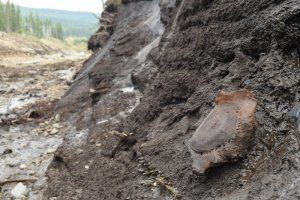
Rapid phases of warming climate played a greater role in the extinction of megafauna in the Late Pleistocene than did human activity, a new study shows. The study helps to inform the debate about what killed off megafaunal species (or animals, such as mammoths, over 100 pounds) during the last glacial period, commonly known as the Ice Age – a subject that is highly debated, with some scientists pointing to human hunting and land alteration, and others to climate change.
Using advances in analyzing ancient DNA, radiocarbon dating and other geologic records, an international team led by researchers from the University of Adelaide and the University of New South Wales (Australia) have revealed that short, rapid warming events, known as interstadials, recorded during the last ice age or Pleistocene (60,000-12,000 years ago) coincided with major extinction events even before the appearance of humans.
“This abrupt warming had a profound impact on climate that caused marked shifts in global rainfall and vegetation patterns,” said University of Adelaide lead author and Director of the Australian Centre for Ancient DNA, Professor Alan Cooper.
The researchers came to their conclusions after detecting a pattern, 10 years ago, in ancient DNA studies suggesting the rapid disappearance of large species. At first the researchers thought these were related to intense cold snaps. However, as more fossil-DNA became available from museum specimen collections and through improvements in carbon dating and temperature records that showed better resolution through time, they were surprised to find the opposite. It became increasingly clear that rapid warming, not sudden cold snaps, was the cause of the extinctions during the last glacial maximum.
The research results help explain, for example, the sudden disappearance of mammoths and giant sloths that became extinct around 11,000 years ago at the end of the last ice age.
_________________________________________
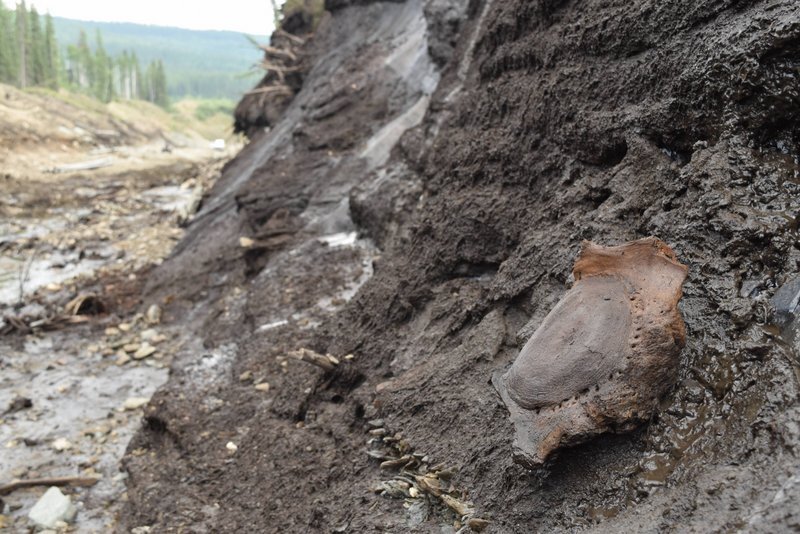 Above: Mammoth vertebrae in ice, in Yukon Territory, Canada. Photo credit Kieren Mitchell
Above: Mammoth vertebrae in ice, in Yukon Territory, Canada. Photo credit Kieren Mitchell
________________________________________________________
 Abseiling into Natural Trap Cave, Wyoming. Alan Cooper descending the 100ft pitch into NTC to excavate Ice Age megafaunal bones. Photo credit Laura Weyrich
Abseiling into Natural Trap Cave, Wyoming. Alan Cooper descending the 100ft pitch into NTC to excavate Ice Age megafaunal bones. Photo credit Laura Weyrich
_______________________________________________________
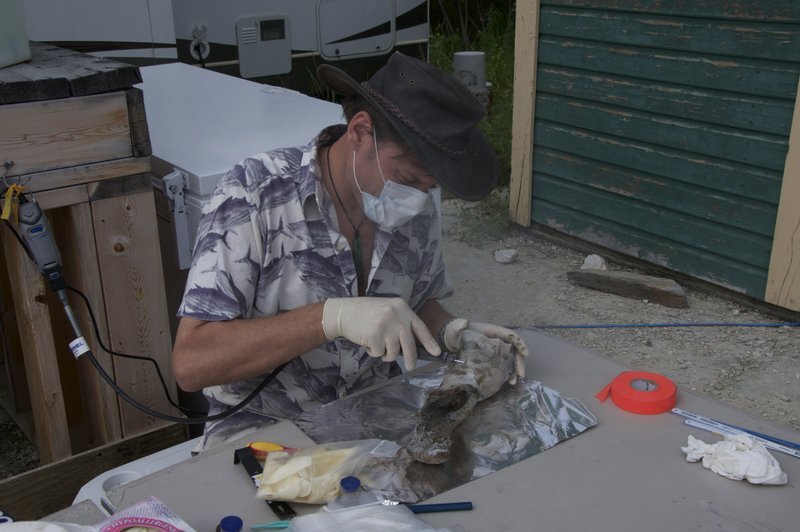 Alan Cooper sampling permafrost bison bone, in Yukon Territory, Canada. Photo credit Julien Soubrier
Alan Cooper sampling permafrost bison bone, in Yukon Territory, Canada. Photo credit Julien Soubrier
___________________________________________________________
But this does not dismiss human hunters as a player in the extinction process, the researchers note. They make the point that the unique megafauna population structures that resulted from climate change events could have made the giant mammals more susceptible to human impact.
“It is important to recognize that man still played an important role in the disappearance of the major mega fauna species,” said fellow author Professor Chris Turney from the University of New South Wales. “The abrupt warming of the climate caused massive changes to the environment that set the extinction events in motion, but the rise of humans applied the coup de grace to a population that was already under stress.”
The study may also have implications for the future. It brings to mind the present-day phenomenon of a rapidly increasing list of endangered species, indicating alarming changes in the faunal environment.
“Even without the presence of humans we saw mass extinctions,” said Cooper. “When you add the modern addition of human pressures and fragmenting of the environment to the rapid changes brought by global warming, it raises serious concerns about the future of our environment.”
In addition to the finding, the new statistical methods used to interrogate the datasets (led by Adelaide co-author Professor Corey Bradshaw) and the new data itself has created an extraordinarily precise record of climate change and species movement over the Pleistocene. The new dataset will allow future researchers a better understanding of this important period.
The report*, published in the journal Science, is related to a special package from Science’s News department on ancient DNA. The full package includes six articles written by various members of Science’s News department.
_________________________________________________________
*”Abrupt warming events drove Late Pleistocene Holarctic megafaunal turnover,” by A. Cooper; B.W. Brook; C.J.A. Bradshaw at University of Adelaide in Adelaide, SA, Australia; C. Turney at University of New South Wales in Sydney, NSW, Australia; K.A. Hughen at Woods Hole Oceanographic Institution in Woods Hole, MA; B.W. Brook at University of Tasmania in Hobart, TAS, Australia; H.G. McDonald at National Parks Service in Fort Collins, CO.
Adapted and edited from the subject press releases of the University of Adelaide and Science magazine, a publication of the American Association for the Advancement of Science.
_________________________________________________________
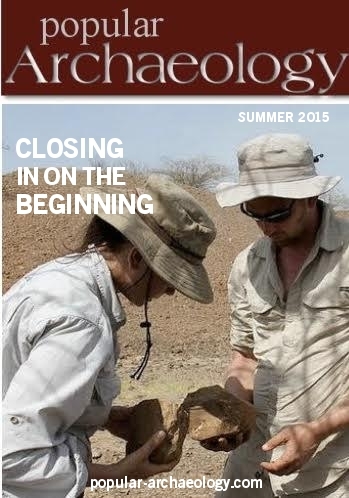 Read more in-depth articles about archaeology with a premium subscription to Popular Archaeology Magazine.
Read more in-depth articles about archaeology with a premium subscription to Popular Archaeology Magazine.
In addition, the latest Popular Archaeology ebook is now available.
______________________________________________
Travel and learn with Far Horizons.
____________________________________________
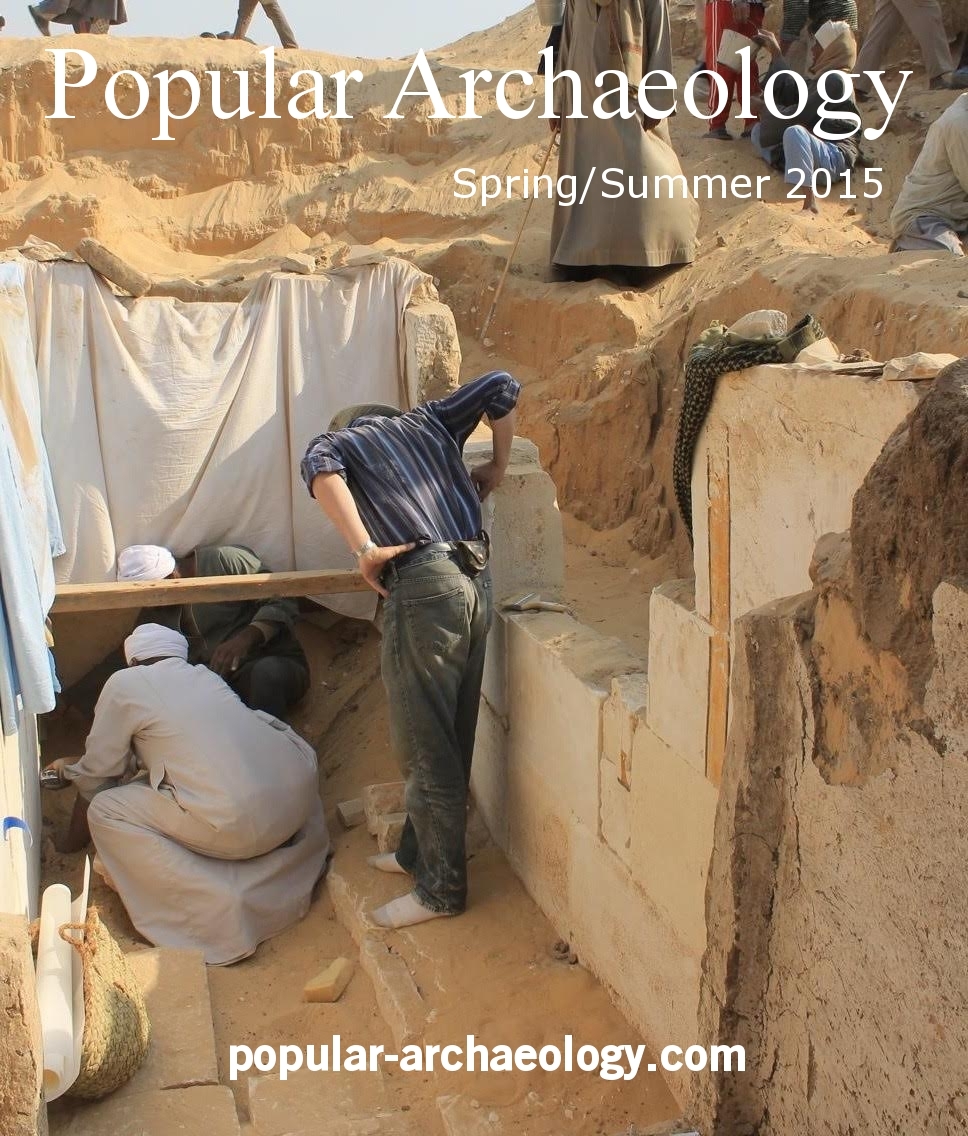 This richly illustrated ebook version of a recent Popular Archaeology issue includes the following stories: The discovery of the tomb of a previously unknown pharaoh that is shedding light on a lost ancient Egyptian dynasty; how genetics is revolutionizing what we know about human evolution and our prehistoric past; one scholar’s controversial ‘New Chronology’ and how it supports the historicity of the biblical Exodus; how archaeologists are unearthing new history in Williamsburg, Virginia, a seat of British colonial power in 18th century America; the discovery of the remains of a major Roman legionary base in Israel; the unearthing of an ancient Judean fortified settlement in the borderlands between the biblical kingdoms of ancient Judah and the Philistines; and how archaeologists are uncovering evidence of what may have been an important administrative center of Judah during the 8th century BCE. Now available from Amazon.com!
This richly illustrated ebook version of a recent Popular Archaeology issue includes the following stories: The discovery of the tomb of a previously unknown pharaoh that is shedding light on a lost ancient Egyptian dynasty; how genetics is revolutionizing what we know about human evolution and our prehistoric past; one scholar’s controversial ‘New Chronology’ and how it supports the historicity of the biblical Exodus; how archaeologists are unearthing new history in Williamsburg, Virginia, a seat of British colonial power in 18th century America; the discovery of the remains of a major Roman legionary base in Israel; the unearthing of an ancient Judean fortified settlement in the borderlands between the biblical kingdoms of ancient Judah and the Philistines; and how archaeologists are uncovering evidence of what may have been an important administrative center of Judah during the 8th century BCE. Now available from Amazon.com!
____________________________________________






